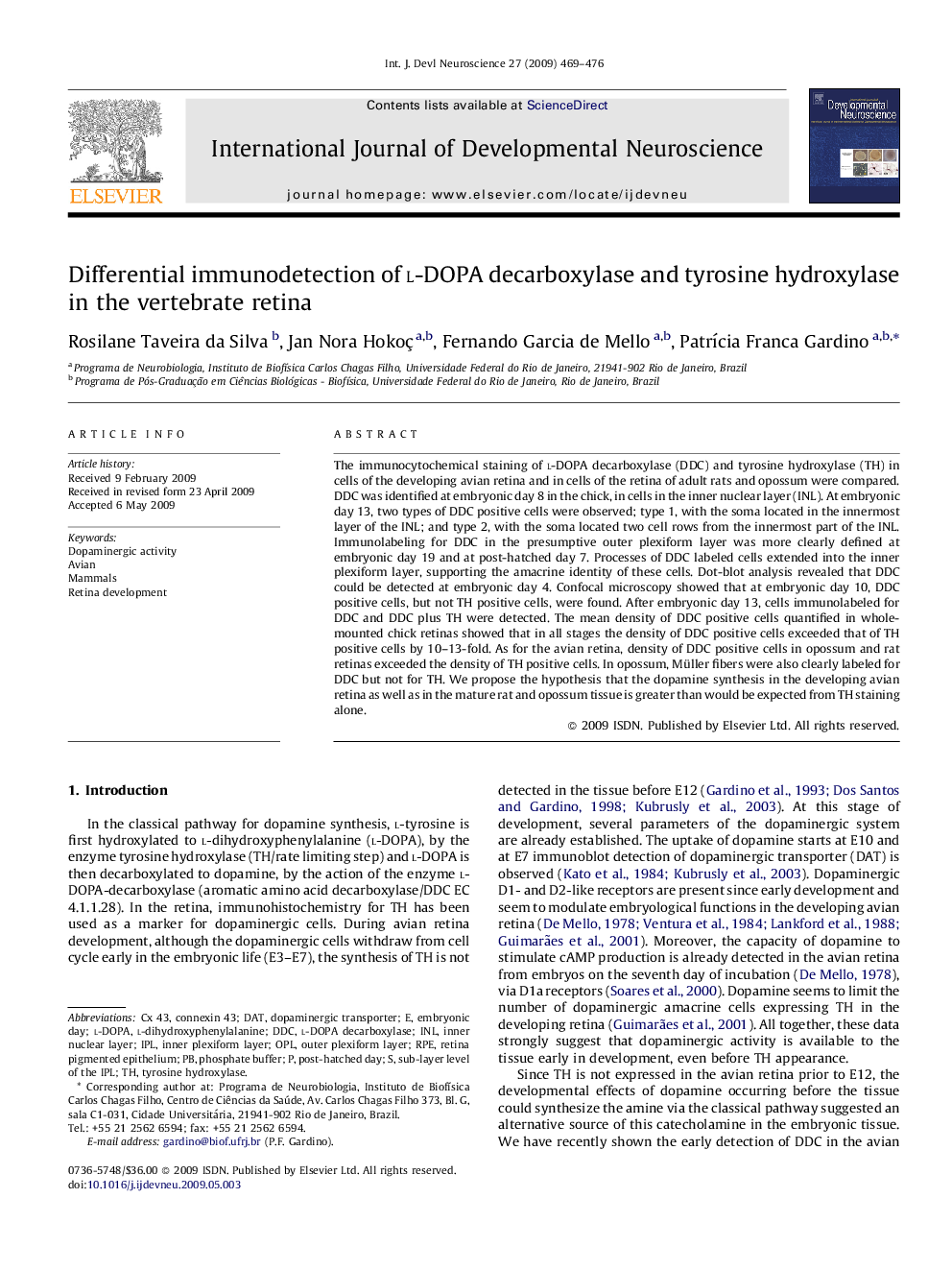| Article ID | Journal | Published Year | Pages | File Type |
|---|---|---|---|---|
| 2786951 | International Journal of Developmental Neuroscience | 2009 | 8 Pages |
Abstract
The immunocytochemical staining of l-DOPA decarboxylase (DDC) and tyrosine hydroxylase (TH) in cells of the developing avian retina and in cells of the retina of adult rats and opossum were compared. DDC was identified at embryonic day 8 in the chick, in cells in the inner nuclear layer (INL). At embryonic day 13, two types of DDC positive cells were observed; type 1, with the soma located in the innermost layer of the INL; and type 2, with the soma located two cell rows from the innermost part of the INL. Immunolabeling for DDC in the presumptive outer plexiform layer was more clearly defined at embryonic day 19 and at post-hatched day 7. Processes of DDC labeled cells extended into the inner plexiform layer, supporting the amacrine identity of these cells. Dot-blot analysis revealed that DDC could be detected at embryonic day 4. Confocal microscopy showed that at embryonic day 10, DDC positive cells, but not TH positive cells, were found. After embryonic day 13, cells immunolabeled for DDC and DDC plus TH were detected. The mean density of DDC positive cells quantified in whole-mounted chick retinas showed that in all stages the density of DDC positive cells exceeded that of TH positive cells by 10-13-fold. As for the avian retina, density of DDC positive cells in opossum and rat retinas exceeded the density of TH positive cells. In opossum, Müller fibers were also clearly labeled for DDC but not for TH. We propose the hypothesis that the dopamine synthesis in the developing avian retina as well as in the mature rat and opossum tissue is greater than would be expected from TH staining alone.
Keywords
Related Topics
Life Sciences
Biochemistry, Genetics and Molecular Biology
Developmental Biology
Authors
Rosilane Taveira da Silva, Jan Nora Hokoç, Fernando Garcia de Mello, PatrÃcia Franca Gardino,
